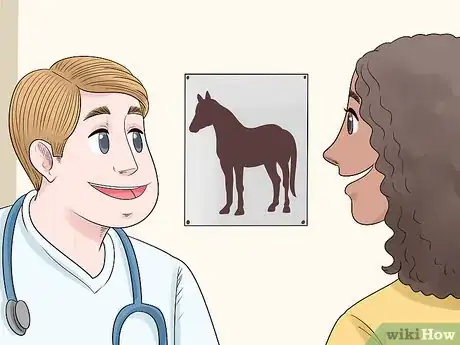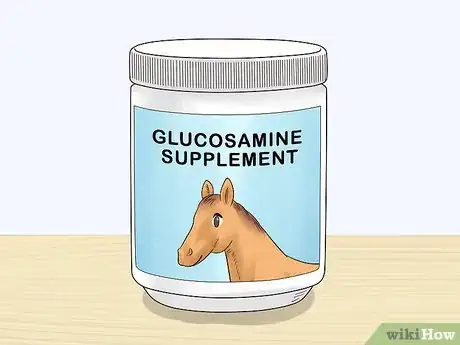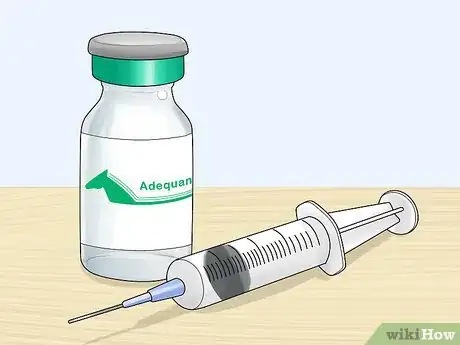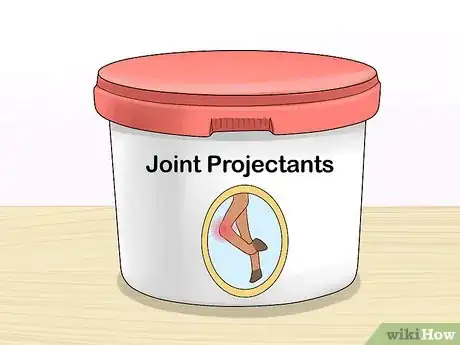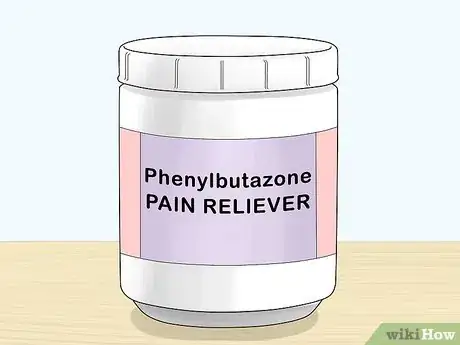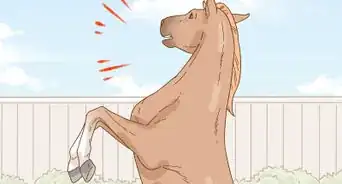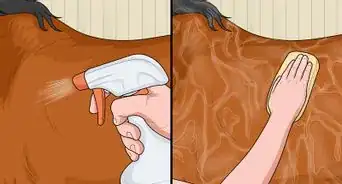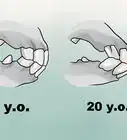This article was co-authored by Ryan Corrigan, LVT, VTS-EVN. Ryan Corrigan is a Licensed Veterinary Technician in California. She received her Bachelor of Science in Veterinary Technology from Purdue University in 2010. She is also a Member of the Academy of Equine Veterinary Nursing Technicians since 2011.
This article has been viewed 14,184 times.
Arthritis is a painful joint problem that affects horses as well as humans. If your four-legged friend is suffering from the problem, supplements and medications can provide some relief from painful inflammation. Making lifestyle changes, like light exercise and farrier work, can also increase your horse’s comfort and quality of life. Since arthritis is almost impossible to stop, it is important to keep in touch with a veterinarian for advice on continued treatment.
Steps
Making Lifestyle Changes
-
1Consult your veterinarian. A vet will need to examine your horse and assess the factors that might be contributing to its arthritis, including age, diet, and activity level. This will help them determine the right medication and lifestyle changes to prescribe your horse.
- Your vet may take x-rays to assess the severity of your horse’s arthritis and make further suggestions for treatment.
-
2Control the horse’s weight. If your horse is overweight, this will put additional strain on its joints, worsening pain and discomfort. Help your horse lower its weight, if necessary, then feed it a nutritious but lean diet to keep its weight down.[1]
- Keeping an older horse nourished can be difficult because their nutritional needs and ability to digest food may change. Always ask your vet for advice before making major changes in your horse’s diet.
Advertisement -
3Don’t keep your horse confined to the stable. Arthritic horses will probably be reluctant or unable to move like they once did. Keeping them indoors, however, will actually make the problem worse. Provide a large pasture for them to roam and graze about to keep the joints moving and prevent the horse from getting too stiff.Regular light exercise, such as trail riding, will be good for your horse, and limit the effects of arthritis.
-
4Talk to your farrier. The condition of a horse’s hooves and shoes are critical to its movement and comfort, and this is especially the case for one suffering from arthritis. Let your farrier know that the horse is having problems with arthritis, and they may make recommendations that will keep its hooves in good condition and make it more comfortable.
Trying Supplements and Medications
-
1Give your horse feed supplements. A number of nutritional supplements are available, including glucosamine and hyaluronic acid. These can be given to your horse along with its food to help alleviate some of the symptoms of arthritis, like pain and stiffness.[2]
- Look for feed supplements at a supply store, or ask your vet.
- Feed supplements are a simple option to try at first. However, they are not regulated, and they are not guaranteed to be effective.
- Ask your vet what they recommend for your horse based on the severity of your horse's issues
-
2Try injectable joint products. Some products, including polysulfated glycosaminoglycans (Adequan) and sodium hyaluronate (Legend) can be injected directly into the affected joint to give your horse some relief. A vet may also recommend injecting the joint with steroids or hyaluronic acid.[3]
- These products can give immediate relief. In some cases, their benefits can last for months or years.
- Your vet will sterilize the area to be injected and inject the correct steroid and acid combination.
- Once you go down the road of injecting a joint, you will likely have to inject the same joint again in the future to keep your horse comfortable.
-
3Ask about joint projectants. Arthritis is caused by a combination of inflammation and degeneration (breaking down) at affected joints. In addition to the products that provide relief from painful inflammation, ones like glucosamine and chondroitin can help protect the joint itself from damage. Your vet can prescribe the right product for your horse.
-
4Supply pain relievers. Some products, including phenylbutazone and firocoxib, won’t treat the joint itself, but will provide your horse with some general pain relief. Your vet will prescribe these for your horse if they believe the medicine will improve the horse’s quality of life.
- Use painkillers as directed by your veterinarian. Giving pain medication more frequently than recommended or in too large a quantity can damage your horse’s gastrointestinal tract and cause kidney or liver failure.
-
5Expect the issue to progress over time. Medications can definitely help a horse be more comfortable, and caring well for your horse can increase its quality of life. However, it is almost impossible to repair the damage caused by arthritis. Over time, problems caused by arthritis will increase, so it is important to stay in touch with your vet about continued treatment.
References
About This Article
Before you treat arthritis in your horse, make sure to consult your veterinarian to determine how severe the arthritis is and what treatment is necessary. For example, if your horse is overweight, helping it lose weight may be the simplest way to reduce strain on its joints. You can try switching to a leaner food source and allowing your horse more time outdoors to shed excess weight. Additionally, you can treat arthritis in your horse by giving it feed supplements, like glucosamine or hyaluronic acid, which can reduce pain and stiffness. To learn how to give your horse injections to treat its arthritis pain, read more from our Veterinary co-author.
